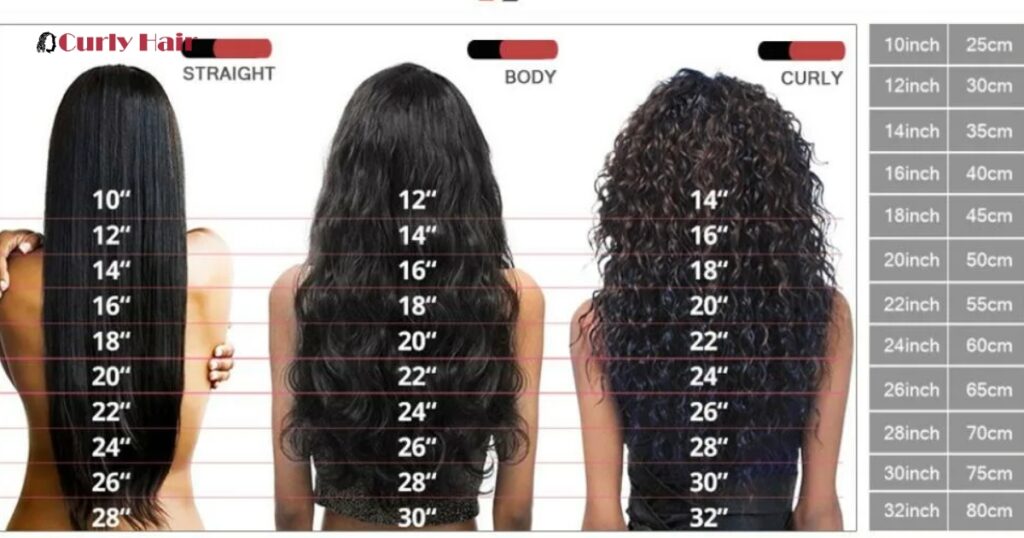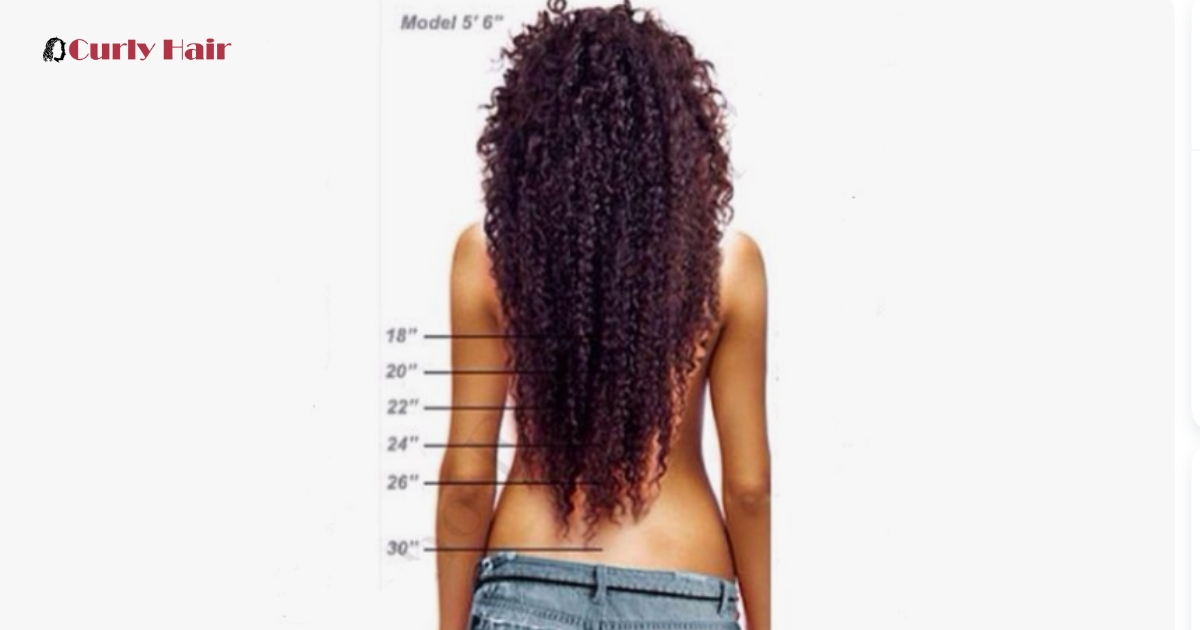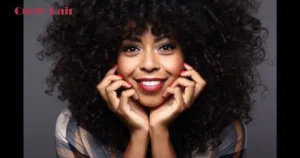Curly hair can be tricky to measure because of shrinkage, making it look shorter than it is. That’s where a hair hurly length chart comes in handy. This curly hair length chart helps you understand your hair’s true length by accounting for the natural curl pattern. Whether your curls are loose or tightly coiled, using this chart will make it easier to track your hair growth and know exactly how long your curly hair is when stretched.
The Ultimate Guide to Hair Length Chart for Curly Hair
Curly hair is unique, beautiful, and sometimes a bit challenging to manage, especially when measuring its length. Unlike straight hair, curls can shrink dramatically, making it hard to assess how long your hair is. This is where a hair length chart comes into play.
A curly hair cuts length chart provides a helpful guide to understanding where your hair falls in terms of length when accounting for the natural shrinkage that comes with curly textures.
In this guide, we’ll cover everything you need to know about measuring and tracking curly hair length, from understanding shrinkage to using a hair length chart designed specifically for curly hair types.
Understanding the Challenges of Measuring Curly Hair Length
Measuring curly hair is not as straightforward as measuring straight hair. curly hair tends to shrink when it dries or curls up tightly, so what appears to be short hair might be much longer when stretched out. For instance, a curl that rests at your shoulders when dry could extend to the middle of your back when wet or straightened.
This phenomenon can make it tricky to track your hair growth accurately, and without the right tools, you might not see the full picture of how much your hair is growing. That’s why having a proper curly hair length guide and understanding shrinkage is so important.
Hair Shrinkage in Curly Hair
Hair shrinkage is a natural characteristic of curly hair, and it can significantly affect how long your hair appears. On average, curly hair can shrink anywhere between 20% to 75% depending on the curl type. Tighter curls and coils, such as 4B or 4C types, tend to experience more shrinkage compared to looser curls like 3A or 3B.
Using a hair shrinkage chart can help you visually compare the actual length of your hair when stretched versus its appearance when curly. Understanding your hair’s shrinkage pattern is key to knowing how long your hair truly is and how much it has grown.
The Curly Hair Length Guide

A curly hair length guide breaks down the different stages of hair length based on how your curls look in their natural state. Since curls shrink, these stages are a bit different from traditional hair length charts that cater primarily to straight hair.
Short curly hair generally rests above the chin or at the earlobes, while medium length falls around the shoulders. Long curly hair reaches beyond the shoulders, often down to the mid-back when fully stretched, and extra-long hair can extend to the lower back. By using this guide.
Here’s A Simple Breakdown Of Curly Hair Length Stages
Curly hair goes through distinct length stages, each characterized by how the curls behave and how they appear due to natural shrinkage. In the short stage, curly hair typically rests above the chin or near the earlobes when it’s in its natural state. Although it may be longer when stretched, it appears relatively close to the scalp because of the tight curls. Moving to the medium stage, the hair begins to fall around the shoulders or just below.
When curly hair reaches the long stage, it extends beyond the shoulders, often reaching the mid-back. At this length, the curls are more prominent, and while shrinkage is still a factor, the true length becomes more apparent as the hair gains weight, stretching the curls slightly. Finally, in the extra long stage, curly hair reaches the lower back or even beyond.
Using the Hair Length Chart for Curly Hair
Start by stretching a section of your hair when it’s dry. Measure it from root to tip using a soft tape measure. Compare the length with the chart to determine whether your hair falls into the short, medium, or long categories. Make sure to account for any shrinkage if you want an accurate reflection of your hair’s growth.
The beauty of the length chart for curly hair is that it not only helps you understand how long your hair is but also sets realistic expectations for hair growth progress. Remember, the appearance of your curls may vary based on their pattern, density, and the level of moisture in your hair.
Comparing Curly Hair Length to Straight Hair
Curly hair differs greatly from straight hair in terms of length appearance. For example, a person with straight hair might easily see their hair’s true length, while someone with curls might have to stretch their hair to see the full extent. This is why comparing curly hair length to straight hair is so essential.
If you’ve ever straightened your hair, you may have noticed that it appears much longer than when it’s in its natural state. This is simply because curls coil up, reducing the visible length. A curly hair length chart helps bridge this gap by offering a standardized way of measuring curly hair, just as straight-haired individuals can do more easily.
4 Steps to Measure Curly Hair Length Correctly
1. Stretch a Section of Your Hair: Start with a small section of hair, and gently stretch it to its full length without pulling too hard.
2. Use a Tape Measure: Take a soft tape measure and place it at the root of the hair, pulling it down to the tip of the stretched section.
3. Record the Length: Write down the length and repeat this for different sections of your hair, as curls can vary in length across your head.
4. Consider Shrinkage: Remember that the length you’ve measured is the stretched length, not the length your hair will appear when it’s curly.
Curly Hair Length and Growth Expectations

Curly hair grows at the same rate as straight hair about half an inch per month on average but because of shrinkage, it may feel like it’s growing more slowly. If you use a curly hair length guide, you’ll notice that different lengths may look much shorter than they truly are.
For example, if your hair falls at your shoulders when curly, it may stretch to your mid-back when straightened. Setting realistic expectations and understanding that shrinkage can make it seem like growth is slower than it is.
Frequently Asked Question
What is a Hair Length Chart Curly?
A hair length chart is a visual guide designed specifically to help people with curly hair understand and measure the actual length of their hair. Due to shrinkage, curly hair can appear much shorter than it truly is.
How is curly hair length measured differently than straight hair?
Curly hair length is measured by stretching a section of hair to its full length. This differs from straight hair, where you can measure it in its natural state. For curly hair, shrinkage often reduces the visible length by 20-75%, so stretching gives a more accurate measurement.
How much does shrinkage affect curly hair length?
Shrinkage can reduce curly hair length by 20% to 75%, depending on your curl pattern. Tighter curls, like 4C hair, typically experience more shrinkage compared to looser curls, such as 3A hair.
How can I use a Hair Length Chart for Curly Hair?
To measure curly hair accurately, gently stretch a section of your hair when it’s dry and use a soft tape measure to measure it from the root to the tip.
Conclusion
Understanding your curly hair’s actual length can be challenging, but a curly hair length chart makes it simple. By measuring your hair properly and using the chart as a guide, you can accurately track your hair’s growth journey and set realistic goals. No more guessing just real results for your beautiful curls.











